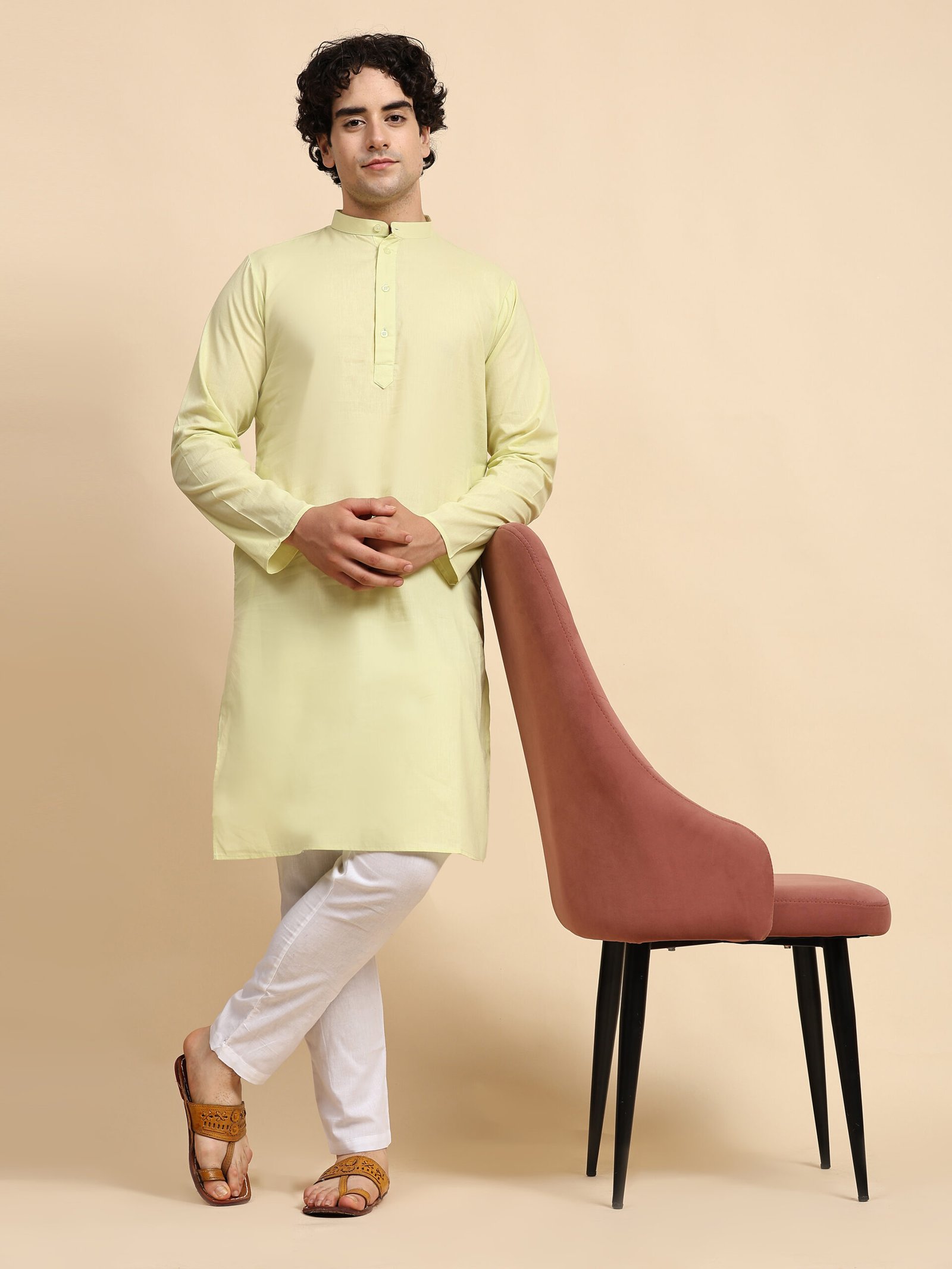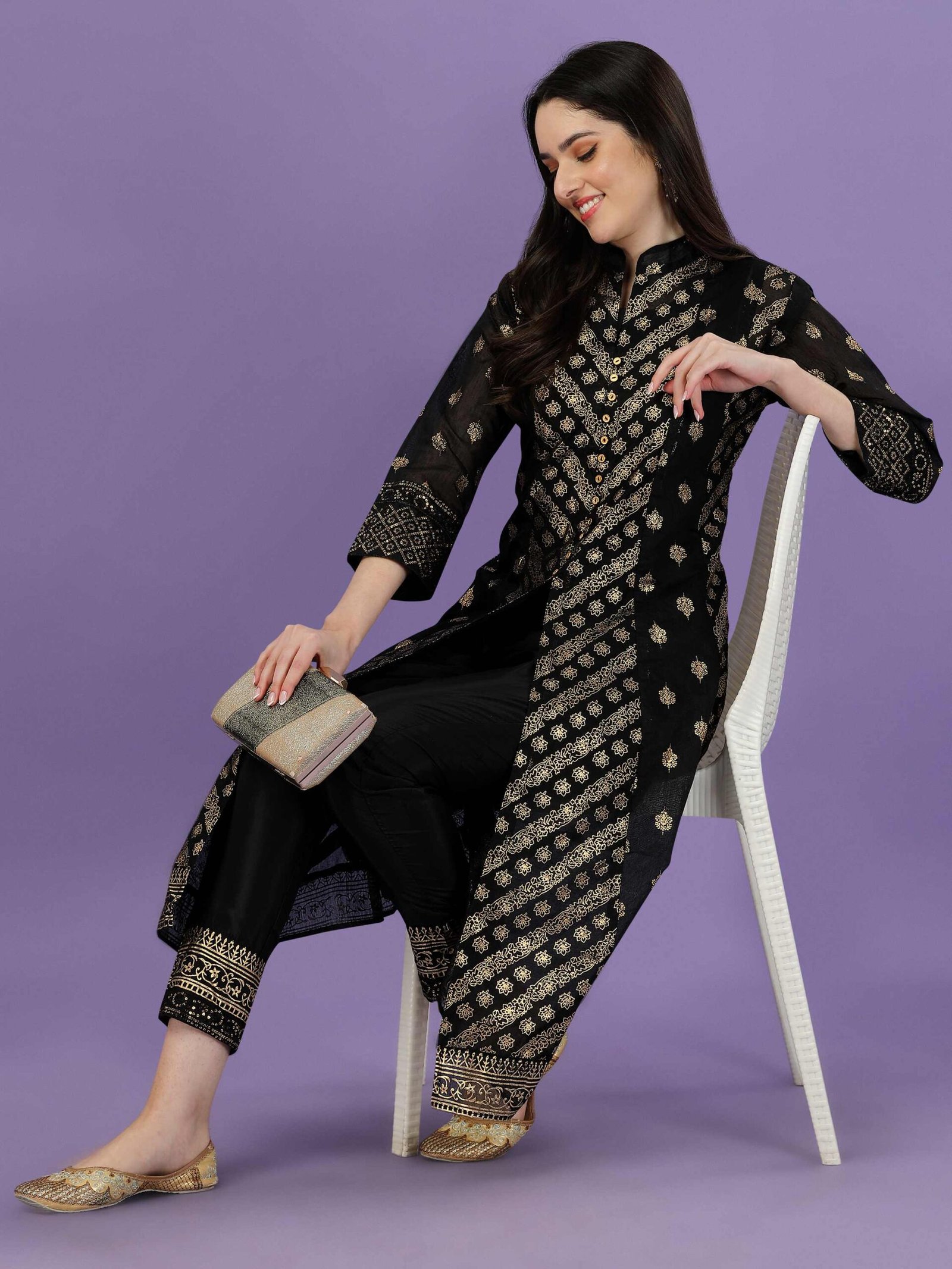Eid dresses typically refer to the clothing worn by Muslims during the celebration of Eid al-Fitr or Eid al-Adha, two major Islamic holidays. These dresses vary greatly depending on cultural traditions, personal preferences, and regional styles.
For Eid celebrations, many Muslims prefer to wear new or special clothes to mark the occasion. Women may wear elegant dresses, often colorful and intricately designed, such as salwar kameez, abayas, kaftans, or other traditional attire. These dress for women can be adorned with embroidery dress, sequins, beads, or other embellishments, depending on individual tastes and cultural norms.
Men also dress up for Eid, often wearing traditional garments such as kurta pajamas, sherwanis, or thobes. These outfits may be paired with accessories like caps, turbans, or scarves, depending on cultural customs.
In recent years, there has been a growing trend of modern and fashionable Eid dresses, incorporating contemporary styles and designs while still respecting cultural and religious sensitivities. Fashion designers and brands often release special Eid collections, catering to the diverse preferences of Muslim communities worldwide.
Eid, the festive occasion celebrated by Muslims worldwide, is not only a time for spiritual reflection and communal gatherings but also a moment to express cultural identity through attire. Eid dress play a pivotal role in marking this joyous occasion, with individuals adorning themselves in garments that reflect their heritage, personal style, and religious reverence. In this comprehensive exploration, we delve into the diverse world of Eid dresses, from traditional attire to modern interpretations, showcasing the richness and vibrancy of Muslim culture
Traditional Elegance: Women’s Eid Dresses
Celebrating Femininity with Traditional Ensembles

Women’s Eid dresses encompass a wide array of traditional garments, each reflecting unique cultural influences and design aesthetics. One of the most prevalent choices is the salwar kameez, a two-piece outfit consisting of a tunic top (kameez) paired with loose-fitting trousers (salwar) and a matching scarf (dupatta). Originating from the Indian subcontinent, the salwar kameez comes in various fabrics, colors, and embellishments, making it a versatile option for Eid celebrations.
The Timeless Elegance of the Abaya
Another iconic garment worn by Muslim women during Eid is the abaya, a loose-fitting, full-length robe that exudes elegance and modesty. Originating from the Middle East, the abaya is often crafted from luxurious fabrics such as silk, chiffon, or crepe, and embellished with intricate embroidery or embellishments along the neckline, cuffs, and hem. Its simple yet sophisticated silhouette makes it a timeless choice for Eid festivities.
Masculine Sophistication: Men’s Eid Attire
Embracing Tradition with Kurta Pajamas

Men’s Eid dresses are characterized by a blend of tradition and sophistication, with garments like the kurta pajama embodying the essence of cultural heritage. The kurta, a long tunic-style shirt, is paired with loose-fitting trousers (pajamas), creating a classic ensemble that is both comfortable and stylish. These outfits often feature ornate embroidery or embellishments, adding a touch of opulence to the wearer’s attire.
Regal Charm of the Sherwani
For formal Eid gatherings and festivities, many men opt for the sherwani, a regal garment that epitomizes grandeur and elegance. Originating from the Indian subcontinent, the sherwani is a long coat-like garment worn over a kurta and churidar trousers. Adorned with intricate embroidery, brocade, or zari work, the sherwani exudes sophistication and charm, making it a popular choice for weddings, Eid celebrations, and other special occasions.
Modern Trends: Contemporary Interpretations of Eid Dresses
Fusion Fashion: Bridging Cultures with Contemporary Designs
In recent years, there has been a surge in fusion fashion, blending traditional elements with contemporary styles to create innovative Eid dresses that appeal to modern sensibilities. Designers are experimenting with silhouettes, fabrics, and embellishments, resulting in garments that seamlessly integrate cultural heritage with global trends. From chic abaya-inspired dresses to modernized sherwanis with unconventional cuts, fusion fashion offers a fresh perspective on Eid attire.
Hijab Fashion: Empowering Muslim Women through Style
Hijab fashion has emerged as a powerful movement within the Muslim community, offering women the opportunity to express their identity and individuality through modest yet stylish attire. Hijabi fashionistas are redefining traditional norms by experimenting with colors, patterns, and textures, creating stunning Eid dresses that resonate with contemporary fashion trends. From elegant maxi dresses to tailored suits paired with statement hijabs, hijab fashion celebrates diversity and inclusivity, empowering women to embrace their faith while expressing their personal style.
Conclusion
Eid dresses serve as a visual expression of cultural heritage, religious identity, and individual style, reflecting the rich tapestry of Muslim traditions and customs. Whether adorned in traditional attire or embracing modern interpretations, Muslims around the world come together during Eid to celebrate unity, diversity, and the spirit of togetherness. As fashion continues to evolve, Eid dresses will undoubtedly evolve with it, reflecting the dynamic nature of Muslim culture and the enduring significance of this cherished celebration.

